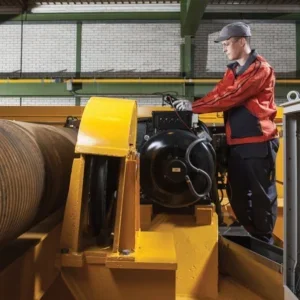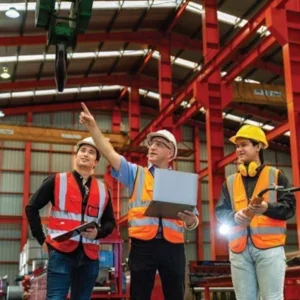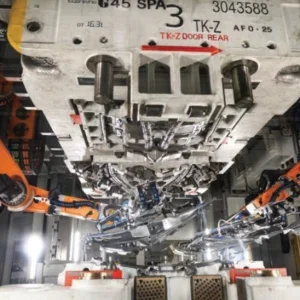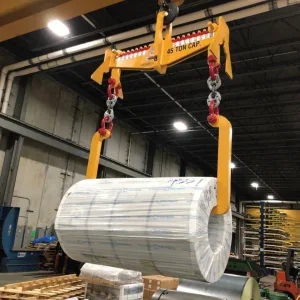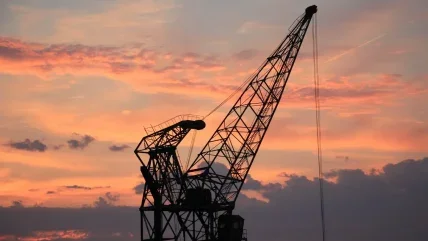
Eastern Europe represents an exciting opportunity for companies in the material-handling sector. It is a region that encompasses a diverse number of cultures, laws, and languages. However, agreeing on a definitive list of countries that make up this part of the world is often open to debate, but among the countries that are considered recognised parts of this region includes Russia, Bulgaria, Belarus, Ukraine Estonia, Czech Republic, Poland and Romania.
There can be no broad-brush approach to the business performance of crane and hoist equipment manufacturea across such a large landmass but industrial construction is integral to the economy in these countries and as a result, material handling firms have a key role to play in Eastern Europe landscape.
Government growth
One such example can be found in Belarus, where construction has grown at an impressive rate in recent years. Worth US$7.5 billion in 2012, the company’s construction sector grew at a compound annual growth rate of more than 30% between 2008-2012 thanks in no small part to proactive government measures to boost the economy. As a result of this approach, Belarus has witnessed an improved investment climate as well as a comprehensive modernisation of its logistics and transport infrastructure.
Industrial construction is a significant contributor to the Belarusian market, accounting for 15% of the total industry’s output in 2012, equivalent to US$1.1 billion. Industry analysts Timetric expect industrial construction to grow at a CAGR of 21.02% to 2017, impacted by an impressive number of manufacturing plants being constructed across the country. Elsewhere, chemical and pharmaceuticals plants, which accounted for 27.2% of this sector in 2012, is a fastgrowing field in Belarus. Predicted to be valued at US$816.4 million in three years, the government here has been keen to attract investment into this arena in a bid to privatise the sector in the future.
Elsewhere, refinery buildings construction has been the fastestgrowing industrial construction category, growing at a CAGR of 32.96%. This sector has been catalysed by strong levels of demand owing to a long period of underinvestment, low efficiency and also high generation costs when compared to other countries in the region. As a result, this sector is expected to grow to a US$145.6 million value in 2017.
Power plant progress
One company that has experienced the impact of this industrial construction growth is OAO Baltkran, a material handling engineering and equipment manufacturer based in Kalingrad, Russia. The firm was recently awarded the contract to supply four overhead cranes for the construction of a nuclear power plant in Belarus, which will be built to the design AES-2006 on the site in Ostrovets, Grodno Region. Named the Belarus NPP, it will comprise two power units that have a total capacity of up to 2,400 MW. The first unit is planned to commission in summer 2018 and the second one coming later in 2020. OAO Baltkran’s involvement comes to a head next year when the first cranes are delivered with the remaining due for installation the following year.
The Baltkran overhead cranes will be installed with the capacity to lift cargo of around 360 tons in weight and are built to a metal structure design that is capable of sustaining the aggressive effects of anti-radiation decontaminating agents that have the temperature around more than 90°C. The machines are specially designed for safe and accidentfree operation to protect against potential external events such as a natural disaster, explosion or even in the instance of an airplane crashing into the reactor dome. For day-to-day functionality, the Baltkran cranes are intended to handle super-heavy equipment such as reactor tanks, steam generators, while also helping transporting fuel.
Two of the cranes Baltkran will supply will have the capacity to handle 500 tons, coupled with crane bridges spanning more than 50m in length. The machines are equipped with two trolleys and spreaders designed for tandem lifting and cargo transportation in addition to accurate assembling functionality. "Meeting expectations of customers is the most important thing for us," explains Artur Ermolaev, vice-president of OAO Baltkran. "We are glad to provide technical solutions, which are satisfying the most rigorous requirements of nuclear power plants."
Cooperation with clients from Belorussia is forcing Baltkran to accept strict terms, envisaged by the legislation of that country. Not one of the contracts has a clause for prepayment – the payment for cranes is processed only after equipment has been delivered, and in several cases payment is transferred only after the crane is put into operation.
Russian banks’ guarantees are not accepted in that country, explains Natalia Golovina, head of economy at OAO Baltkran. "The situation gets more complicated when in many cases contracts are signed not with the end-receiver of the equipment, but with leasing companies. In this case the contract can be signed only with the trusted clients. Nevertheless Baltkran have started to supply equipment to Belorussia since the 1990’s and has established for itself an impeccable reputation as a supplier."
Russian revolution
Baltkran, among with manufacturers such as Demag cranes, has also found Russia to be an arguably strong market for material handling companies, despite a recent stagnation in manufacturing output. However, manufacturing plants are expected to grow at a CAGR of 9.73% by 2017, reaching a value of US$25.9 billion. Chemicals and pharmaceuticals plants are a major contributor in this area, comprising a 24% of Russia’s industrial construction category in 2012. In addition, the power sector has been a major contributor to the country’s construction activity in recent years.
"During the last 18 months, Baltkran has received significant of orders for atomic energy and transportation industry-related projects. The volume of sales has increase for 9%. The most numerous orders were placed for container cranes – 56% of the main volume of received orders. And that is the strongest position in terms of demand among Russian crane-manufacturing businesses," explains Golovina. "The economy of Russian Federation continues to evolve and develop and is stable enough to see a substantial amount of investment to be poured into container terminals. As a result, an increase of orders is observed in this industry. During a two-year period, Baltkran, for example, supplied 13 container cranes to different regions of the country."
Elsewhere, Siemens Gas Turbine Technology has recently called on Demag cranes, commissioning the manufacturer to kit out its production and servicing facility near St. Petersburg. As part of the contract, Terex Material Handling will delivery and install seven process cranes and four universal cranes to the new site. According to Terex, these installations will support the production of gas turbines that will be manufactured for the burgeoning market found in Russia and the Commonwealth of Independent States (CIS), which include Belarus, Armenia and Moldova.
"The confidence placed in the Demag brand by our customer Siemens once more emphasises our leading position as a system supplier for the mechanical engineering sector all over the world," explains Dr Lars Brzoska, vice president and managing director of Terex Material Handling. "We are delighted that our products are able to play an important role at the operations level in the implementation of Siemens global business strategy in the energy sector."
Central to the Demag crane installation is seven radio-controlled double-girder overhead travelling cranes and four wall-mounted travelling cranes. These will travel on three crane levels with five of the process cranes featuring a span of 27m. Its largest crane will arrive equipped with three hoist units featuring load capacities of 250/150/16t.
This is to be used for the handling of large components as well as the transport of completed gas turbines. In addition, two further crane installations operate on a second level, serving the workstations with material using its 25 t hoist units. According to Terex, three Demag EWKE wall-mounted travelling cranes, with an outreach of 10m, will be installed so to move loads weighing up to 3.2t. A fourth wall-mounted travelling crane that features a double-girder design, with an outreach of 11m, will be equipped with travelling hoists that each have a load capacity of 5t.
"Demag cranes and hoists have demonstrated their high quality and performance in Siemens plants for many years, such as in Görlitz, which is specialised in the production of industrial steam turbines," adds Lutz Dowy, vice president sales and product management at Terex Material Handling. "Our local presence in Russia and our manufacturing expertise give us the edge. Our customer Siemens benefits from reliable crane engineering, short delivery and installation times as well as support throughout the product lifecycle with rapid response times."
For Baltkran, increasing customer demands are to be expected and need to be met in order to maintain positive working relationships between parties. "Clients are becoming more and more demanding and are striving to order equipment which will be up to par to the latest state-of-the-art global technical achievements. Practically all the cranes are ordered with variable frequency control and steering that allows to significantly reduce the amount of consumed energy, adds Golovina. "Energy recovery system is also being ordered for some of the cranes to save energy.
"Furthermore, ones of the most reliable systems for safely protecting the equipment are being ordered as well – such as safe working load limiters; crane and cargo anti-collision systems."


